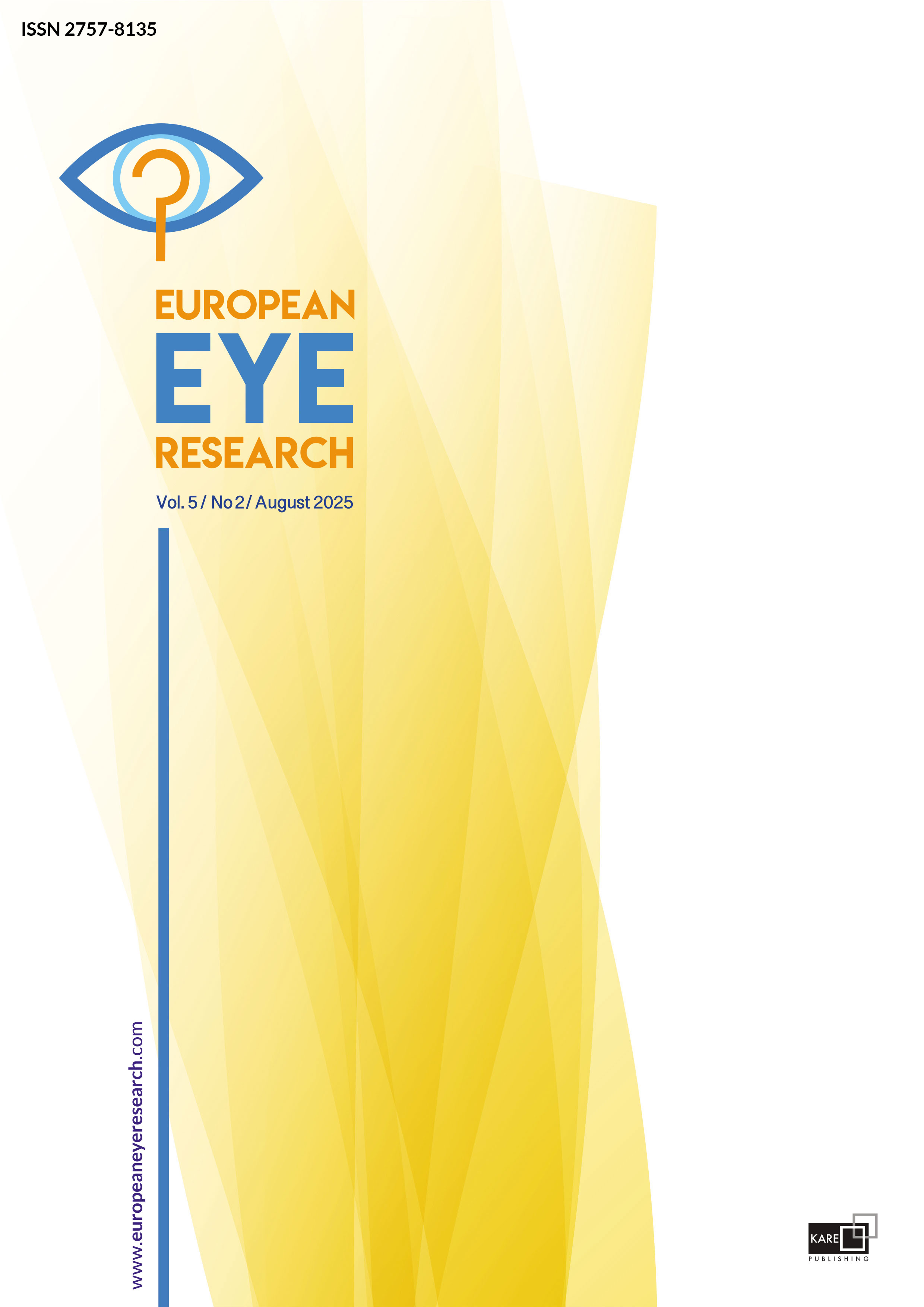

Selective serotonin reuptake inhibitors and ocular health: Analyzing retinal and choroidal thickness variations
Ibrahim Edhem Yilmaz1, Kadir Erdogan Er3, Necip Kara21Department of Ophthalmology, Gaziantep Islam Science and Technology University, Gaziantep, Türkiye2Department of Ophthalmology, Gaziantep University, Gaziantep, Türkiye
3Veni Vidi Eye Hospital, İstanbul, Türkiye
PURPOSE: This study evaluated the posterior segment parameters of the eye in patients using selective serotonin reuptake inhibitors (SSRIs) without systemic disease, using spectral-domain optical coherence tomography (SD-OCT), and compared the effects of different durations of SSRI use on the eye.
METHODS: The study involved 104 participants, divided into three groups: those using SSRIs for less than a year (group 1a), those using SSRIs for 1 year or longer (group 1b), and healthy controls (group 2). The posterior segment parameters of the eye were measured using the SD-OCT, and the data were analyzed using descriptive statistics, analysis of variance, post hoc tests, and correlation analysis.
RESULTS: The results showed that the retinal nerve fiber layer (RNFL) thickness and central foveal thickness (CFT) were significantly lower in Group 1a than in Group 2 (p<0.05), while there was no significant difference between Group 1b and Group 2 (p>0.05). The choroidal thickness was significantly lower in both Group 1a and Group 1b than in Group 2 (p<0.05), but there was no significant difference between the two patient groups (p>0.05). The axial length (AXL) was not significantly different among the groups (p>0.05). There was a weak negative correlation between the duration of SSRI use and the RNFL thickness (r=−0.25, p=0.039), and a moderate negative correlation between the duration of SSRI use and the CFT (r=−0.37, p=0.002). There was no significant correlation between the duration of SSRI use and the choroidal thickness or the AXL (p>0.05).
CONCLUSION: This study suggests that SSRIs may affect the retina and choroid due to various mechanisms. The effects may be time dependent and dose dependent, with longer-term use potentially causing adaptations. Ophthalmologists and psychiatrists should monitor patients for symptoms.
Manuscript Language: English



